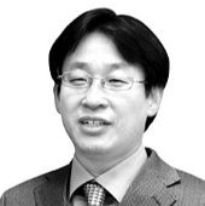Surviving the chip war after being sandwiched
Published: 13 Jun. 2023, 20:20

Kim Chang-gyu
The author is the economic news editor of the JoongAng Ilbo.
Discord between Seoul and Beijing is deepening amid an intensifying competition between the United States and China to dominate the global technology order. The trigger was pulled by Chinese ambassador to Korea Xing Haiming. During a meeting with opposition party leader Lee Jae-myung last Thursday, he warned that Korea will regret it later if it bets on China’s defeat in the contest with the U.S. Seoul summoned Xing for making “provocative” remarks, while Beijing called up Korea’s ambassador to China to lodge its complaint in a tit-for-tat measure.
Semiconductors lie in the heart of the latest discomfort between the two countries. The U.S. has been levying strong sanctions to prevent China from accessing cutting-edge chip technology. It has been touting for a Chip 4 alliance with Korea, Taiwan and Japan to isolate China, irritating Beijing.
The chips came into being through the discovery of the transistor by William Shockley and two other scientists at Bell Laboratories in New Jersey in 1948. To commercialize silicon semiconductor devices, Shockley started the Shockley Semiconductor Laboratory near Palo Alto, California. But eight of his best researchers deserted the company in protest of Shockley’s domineering management style to form Fairchild Semiconductor in San Jose as a division of airplane conglomerate Fairchild Aviation Co. to later become the pioneer of silicon transistors and integrated circuits. That’s how Silicon Valley started.
Fairchild engineers went on to found multiple tech companies, giving birth to the technology hotbed. Gordon Moore co-founded Intel Corp. while others formed AMD and Motorola. Texas Instruments, originally an equipment manufacturer for the seismic industry, bought a patent to produce germanium transistors from AT&T and created the first workable silicon transistor. The chip Golden Age came to full bloom.
But the U.S. supremacy in semiconductors did not last long. American enterprises began to turn to Asia due to cheaper labor and production costs. Japan grabbed the chance to gain access to the technology. While U.S. companies tightened their belts during the two rounds of oil shocks, Japanese companies invested heavily on chip capacity. Before long, Japanese names came to dominate the global chip market. Of the 10 biggest chipmakers in the 1980s, six were from Japan, including NEC, Toshiba, and Hitachi. NEC ranked No. 1 from 1985 to 1990. At their peak, Japanese companies accounted for 80 percent of global chip sales.
The U.S. government stepped in when American chipmakers panicked about going under due to oversupply. Washington launched anti-dumping investigations on Japanese chipmakers in 1985. At the same time, the U.S. led the so-called Plaza Accord to force Japan to appreciate its currency against the U.S. dollar.
The moves brought about an end to Japan’s glory days. Japanese companies fell out of the top tier due to multiple sanctions and the jump in the yen value. By the mid-2000s, there was not a single Japanese company in the top 10 chipmakers. Market-aloof ways also pushed them out of the global market. While Japanese companies shied away from investment during the slump, Korean companies under owner management carried out aggressive investment, making them dominant players in the memory market.
Taiwan targeted the niche market. Finding the memory sector overly competitive, its makers turned to consigned manufacturing. Taiwan Semiconductor Manufacturing Co. (TSMC), founded in 1987 as the first pure-play foundry, has now become the unrivalled producer of on-demand chips. China has been aggressively breeding its players with an aim to raise its chip self-sufficiency rate to 70 percent. Of the 20 chip companies listed as recording the fastest advance over a year compiled by Bloomberg in June last year, 19 were Chinese.
China’s rapid rise in the chip sector led to strong U.S. actions. In 2020, Washington restricted China-bound exports of U.S.-origin technologies products. Through the chip subsidy program, companies receiving subsidies for investments in the U.S. are prohibited from expanding their production capacity in China.
The chip market has gone through wars without weapons, with the winners and losers changing often. Any player can fall prey to the volatile cycle in the high-risk game. Governments are heavily involved as they regard chips as a strategic asset. Chips have become more than business. They define security as the crucial element to defense and core infrastructure. Without a stable chip network, a company or a nation could come to a standstill.
The U.S., which encouraged globalization and outsourcing, has turned inwardly to rebuild a chip ecosystem on its home turf. It wants to redesign the industrial order. Because foreign and security affairs have been blended into the economy, business has become a tricky matter.
Korea finds itself sandwiched between the U.S. and China once again. As its economy relies on exports, the country cannot easily take a side. Companies cannot fight alone simply with tech supremacy. The government must work closely with companies to deliberate on Korea’s chip future.










with the Korea JoongAng Daily
To write comments, please log in to one of the accounts.
Standards Board Policy (0/250자)